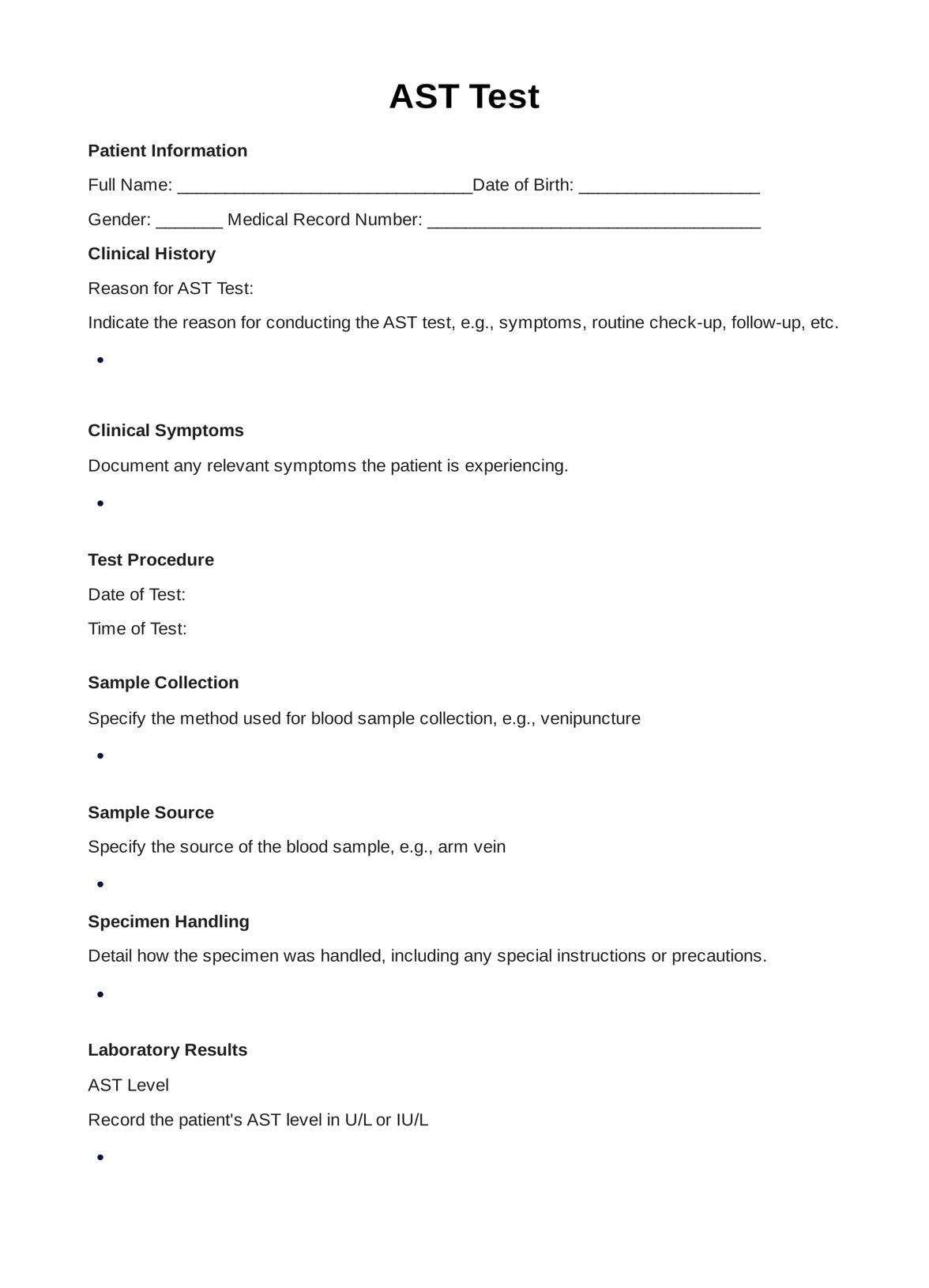AST tests are typically requested by healthcare providers such as doctors, nurses, and specialists, including gastroenterologists and cardiologists.

AST
Learn about the AST test and its uses and interpretation. Get insights into AST test results and their significance.
Use Template
AST Template
Commonly asked questions
AST Tests are used to assess liver and heart health. They are employed when patients exhibit symptoms or risk factors associated with liver or heart conditions, during routine check-ups, or in emergencies like suspected heart attacks.
AST Tests involve collecting a blood sample, usually from a vein in the arm. The sample is then sent to a laboratory for analysis. The results help diagnose and monitor liver and heart conditions.
EHR and practice management software
Get started for free
*No credit card required
Free
$0/usd
Unlimited clients
Telehealth
1GB of storage
Client portal text
Automated billing and online payments











